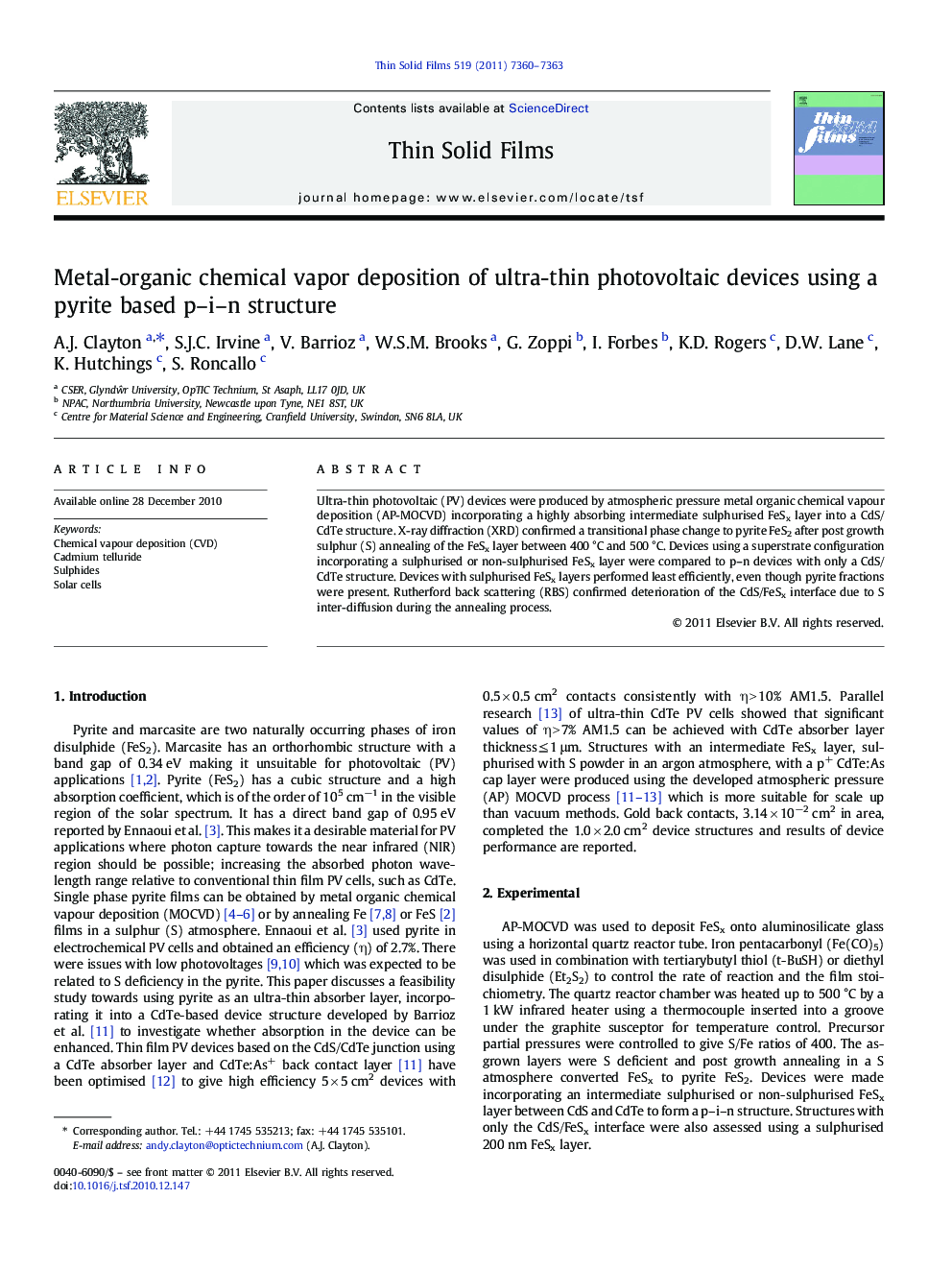| Article ID | Journal | Published Year | Pages | File Type |
|---|---|---|---|---|
| 1669024 | Thin Solid Films | 2011 | 4 Pages |
Abstract
Ultra-thin photovoltaic (PV) devices were produced by atmospheric pressure metal organic chemical vapour deposition (AP-MOCVD) incorporating a highly absorbing intermediate sulphurised FeSx layer into a CdS/CdTe structure. X-ray diffraction (XRD) confirmed a transitional phase change to pyrite FeS2 after post growth sulphur (S) annealing of the FeSx layer between 400 °C and 500 °C. Devices using a superstrate configuration incorporating a sulphurised or non-sulphurised FeSx layer were compared to p-n devices with only a CdS/CdTe structure. Devices with sulphurised FeSx layers performed least efficiently, even though pyrite fractions were present. Rutherford back scattering (RBS) confirmed deterioration of the CdS/FeSx interface due to S inter-diffusion during the annealing process.
Related Topics
Physical Sciences and Engineering
Materials Science
Nanotechnology
Authors
A.J. Clayton, S.J.C. Irvine, V. Barrioz, W.S.M. Brooks, G. Zoppi, I. Forbes, K.D. Rogers, D.W. Lane, K. Hutchings, S. Roncallo,
